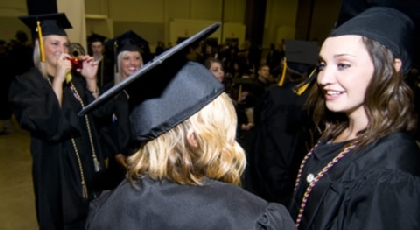Page 49 • (493 results in 0.275 seconds)
-
the content. Imagine a poster for a serious event, but the colors are bright and mismatched. The viewer may become confused. Professional designers use color theory to find colors that create color harmony. Here are a few tools that can help you find a color palette that might work for your next project: Canva Color Wheel – Great overview article about how designers select colors and an introduction to the color wheel. It has a basic tool that you can select and export color palettes. Adobe Color
-
Bio: Julia Watts Belser (she/her) is professor of Jewish Studies at Georgetown University and core faculty in Georgetown’s Disability Studies program, as well as a rabbi and longtime activist for disability and gender justice. Julia’s research brings classical Jewish texts into conversation with disability studies, feminist and queer theory, and environmental justice. She is the author of several scholarly books, including Rabbinic Tales of Destruction: Gender, Sex, and Disability in the Ruins of
-
Logic: Globalization, Conspiracy Theory and the Shoah”, which appeared in the 2012 volume Holocaust Denial: the Politics of Perfidy, edited by Robert Wistrich (an earlier version was published by the Vidal Sassoon Center for the Study of Antisemitism at the Hebrew University in 2009) and “Antisemitism and Terrorism on the Electronic Highway” which appeared in the book Terrorism and the Internet: Threats — Target Groups — Deradicalisation Strategies (IOS Press for NATO, 2010). Mr. Weitzman also co
-
) Media Literacy COMA 388 class culminated in a final “Critical Making” project, where students built, designed, or mocked up a media literacy tool. The goal of the assignment was to envision a web that prioritized the circulation of credible information. Critical making is a process where students apply theories and concepts to a creative project or artifact, and where imaginative design – focusing more on engagement with theory and concepts, rather than functionality – is encouraged. The students
-

focus of my time at PLU. The most important memories I’ve made here center on the relationships I’ve built with professors, and the times when I’ve been challenged to dig deeper into the material and to think in completely different ways. The experiences I cherish most are those when I’ve sat in the classroom, listening to a lecture, and that theory I’ve been studying so hard to really understand finally makes sense, all the pieces finally fit together. Professors like Dr. Huelsbeck, Dr. Eric Nelson
-
. In theory, mutating these small amino acids with larger and more bulky residues should introduce more electron density and therefore close up the cavity making them shorter. Upon successful mutation of SSL-1, enzyme activity will be observed by performing in vitro studies. Ideally, these shorter cavities should better accommodate for shorter botryococcene substrates and ultimately improve the efficiency of biofuel production. Tuesday, April 30th, 2019 (Morken Center, Room 103) 1:00 pm - Welcome1
-
in theory produce two electron-hole pairs per absorbed photon. Singlet fission (SF) is a spin-allowed process by which a molecule in its excited singlet state shares its energy with a ground state molecule to produce two triplet-excited molecules creating the potential of doubling the photocurrent from high-energy photons in solar cells. A series of perylene‑based compounds capable of intramolecular singlet fission have been developed at NREL and in this work we derivatize the aforementioned
-
communities, health vulnerability for all people and climate catastrophes across the planet. She will also share both Navdanya’s experience and her scientific research on how biodiversity and agroecology create economic and social health and climate resilience. Bio: Dr. Vandana Shiva trained as a Physicist at the University of Punjab, and completed her PhD on the ‘Hidden Variables and Non-locality in Quantum Theory’ from the University of Western Ontario, Canada. She later shifted to inter-disciplinary
-
100th Anniversary of the partition of Ireland, Partition: What Did It Do For Us? and a programme that has evolved from the Ethical and Shared Remembering Project, Living With Imperial Legacies: Empires, Racism, Slavery and Colonialism. Maureen sees the Junction as presenting an opportunity to bridge the gap between the academic world and the wider community and the gap between theory and practice, across the various disciplines. Central to its role is an accessible, approachable and significant
-
graduated from PLU in 1960, and later earned a Ph.D. in probability theory at Wayne State University in Detroit. Grace Wang also holds a Ph.D. from Wayne State, in chemistry.
Do you have any feedback for us? If so, feel free to use our Feedback Form.


